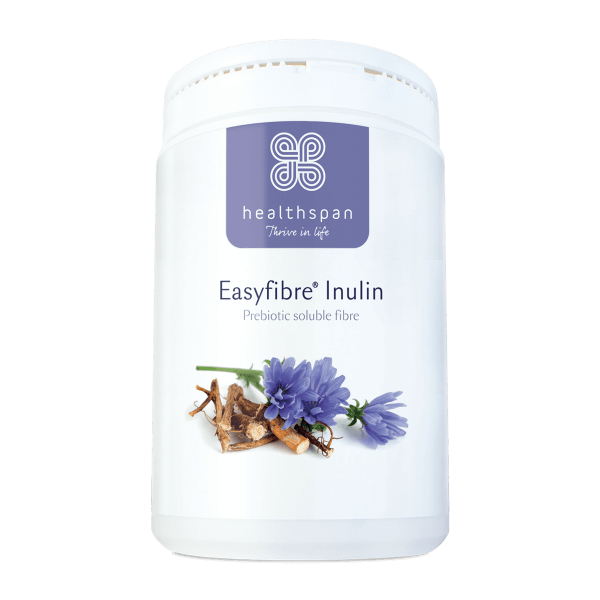Your bowel habits are a pretty good barometer of your digestive health, so understanding what is normal – and not normal – can help you nip problems in the bud. Here's what to look for.
🕒 7 min read
Colour, size and frequency
Changes in the colour, shape and texture of your stool, while slightly disconcerting, mostly resolve themselves within a day or two.
For the record, a healthy bowel movement is usually regarded as one that doesn't cause you to strain as you pass it, is brown in colour and soft to firm (but not hard) in texture. It can be passed as one single stool or a couple of small ones.
When things deviate from this, they can potentially indicate signs of digestive issues, infection or other more serious problems, so it can be helpful to know what to look out for. If things do not resolve themselves in a couple of weeks, see your doctor.
What colour are your stools?
Brown
A healthy stool is usually (no big surprises here) medium to dark brown.
Black or with a reddish-pink tinge
This can indicate the presence of blood, which can potentially indicate gastrointestinal bleeding. However, black stools can also be a natural side effect of taking iron supplements, eating beetroot, too much liquorice or drinking beetroot juice.
Small amounts of blood in poo can be quite common and can be a sign of anal fissure or tears, haemorrhoids (piles), irritable bowel disease or diverticulitis (a digestive condition that affects the large intestine.)
Although one-off bleeding often resolves itself and is generally not a cause for concern, if you have heavy bleeding or see blood in multiple bowel movements, see your GP as soon as possible.
What does blood in a stool look like?
Look out for:
- Very dark, smelly poo (this can be blood mixed in with poo) which is almost black and tarry.
- Bright red streaks on your poo.
- You should also look out for spots of blood on the toilet paper, in the toilet bowl, or in your underwear.
Grey-looking
A greyish tinge can potentially be a sign of liver problems, including your liver not producing enough bile (necessary for the absorption of fat, to assist in detoxification processes in the body and also to keep the balance of gut bacteria in check.)
Yellow
Combined with looking greasy and being foul-smelling, yellow-tinged poo suggests your intestines have not digested or absorbed fat properly. It can also indicate you are not adequately absorbing nutrients from your food, or it could be a problem with the intestinal lining, such as coeliac disease or pancreatitis.
Green
A diet rich in green vegetables like spinach and other leafy greens can result in slightly greener-coloured poo.
Orange
Eating too many orange-coloured foods, rich in the natural pigment beta-carotene, can lead to orange-tinged stools. It might also be a side-effect of some medications, including antacids for heartburn and indigestion, or be a problem with blocked bile ducts.
A stool categorisation system known as the Bristol Stool Chart was devised by doctors in the 1990s at the Bristol Royal Infirmary, based on the bowel movements of almost 2,000 people. According to the chart, there are 7 key types of stool, which can be indicative of your bowel health. These are:
Type 1 – Separate hard lumps, a bit like hard rabbit droppings (very constipated.)
Type 2 – Lumpy and sausage-like, suggesting a degree of constipation.
Type 3 – A sausage-like shape with cracks on the surface (normal.)
Type 4 – Like a smooth sausage or snake (normal.)
Type 5 – Soft blobs with clear-cut edges, suggesting you are not eating enough fibre.
Type 6 – A soft mushy consistency with ragged edges, suggesting possible inflammation.
Type 7 – Liquid, with no solid pieces, suggesting inflammation and diarrhoea.
How often should you move your bowels?
There is no hard and fast answer to this, as it will vary from person to person. What you really need to know is what's normal – or abnormal – for you. If the frequency of movement or consistency of your poo suddenly changes and doesn't change back after a couple of days or weeks, this indicates a problem.
Constipation
As for what classifies as constipation, some experts suggest that it is less a numerical definition (i.e. if you don't go more than three times a week you are not moving your bowels enough and are constipated) and more to do with constipation symptoms, like how much you are straining, any pain when doing so and the hardness of your stools.
However, passing hard pellets and brick-like stools is generally a more accurate indicator there is something amiss.

Easyfibre® Inulin
A natural prebiotic soluble fibre to help maintain a healthy digestive system
- Made from 100% chicory root
- An easy, natural way to add fibre to your diet
- Add to shakes or smoothies, or sprinkle over cereal
What else is considered a problem?
In general terms, the following could potentially suggest a digestive issue:
- Moving your bowels more than three times a day
- Moving them less than three times a week
- Excessive straining
- Stools that are not brown
- Pain when you go
- Bleeding from your bottom or in your poo
- Watery poo and/or diarrhoea, or stools that float
Peter Whorwell, Professor of Medicine and Gastroenterology from Wythenshawe Hospital in Manchester, says one useful piece of advice he would give everyone concerned about their bowel health is: act on your gastro-colonic reflex.
This is the technical name for what is commonly known as 'never ignore the call to stool'. We have all done this at some point – usually because we're busy – but Professor Whorwell says if you do this the urge wears off after an hour or two, and over time this can cause you to become constipated.
How to have healthier bowels
Eat more fibre
Eating plenty of fibre and water-rich foods like vegetables, fruit and wholegrain cereals as part of a well-balanced diet will help to keep your bowels moving normally.
The best foods to help constipation will include soluble or insoluble fibre – and a healthy diet will include sources of both.
Good sources of soluble fibre, which help to give stools bulk, include apples, oats and beans. Insoluble fibre, which includes brown rice, nuts and seeds and fruits with edible seeds like kiwis, helps speed up the transit of food in the digestive tract.
Just don't overdo it on the insoluble fibre front as this can make you feel bloated.
Take a little light exercise
Exercise increases your metabolism, which in turn increases gastrointestinal motility (the process by which food travels through the digestive tract using muscular contractions) and is an excellent way to relieve constipation.
More moderate exercise trumps the more extreme kind – marathon or event runners often have trouble with overactive bowels.
Have a coffee
Coffee stimulates the gut by creating something of an irritant effect. Warm drinks, like coffee and tea, are also known to help get the bowel moving and provide constipation relief.
Try not to exceed three to four regular-sized cups a day – as any more could increase your risk of dehydration (and with it, constipation.)
Drink more water
Not drinking enough water or other fluids can lead to constipation as stool needs moisture to move more easily through the digestive tract. Too much alcohol and caffeine can also contribute to dehydration.
Inulin
Inulin is a natural prebiotic: a soluble fibre made from 100% chicory root that absorbs water and promotes softer stools and easier bowel movements.
Inulin is available as a supplement that you can add to smoothies or sprinkle on cereal.
Probiotics
These can help to restore the natural balance of bacteria in the gut (including your stomach and intestines). Probiotics can be particularly helpful if your gut has been disrupted by illness (say, a stomach bug) or medication (like antibiotics.)
Research suggests they may help support better nutrient absorption and help with constipation, diarrhoea and digestive conditions like IBS.
Magnesium
This is often used as a natural, gentle laxative, to soften the stool and relieve occasional constipation, and is included in many over-the-counter constipation remedies. Research also suggests taking magnesium in supplement form can relieve occasional constipation.
Peppermint oil
This is a known antispasmodic that can help the muscle in your bowel to relax. Research shows peppermint oil can relieve stomach cramps, bloating and flatulence and symptoms of IBS. It also appears to help reduce nausea.
When to see your GP
Be alert to any sudden change in bowel habits and monitor them. Some causes of sudden constipation and/or diarrhoea can be explained by a change in your routine (going on holiday, for example) or the fact you are taking new medication (such as codeine) but if there is no logical explanation, you are 50 or over and/or have a family history of bowel disease, it is important to see your doctor.








